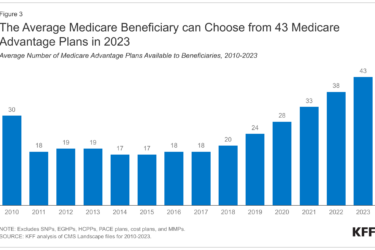
Bruce Chernof, M.D., is a geriatrician, president of The SCAN Foundation, based in Long Beach, Calif., and a former chairman of the Federal Commission on Long Term Care. He was in the audience for last week’s White House Conference on Aging, listening from multiple perspectives. Overall, he said in a phone interview, he was pleased with the outcomes.
Q: What were your overall impressions of the conference?
A: It’s important the President was there and spoke up as forcefully as he did. We needed the President to take part in this conversation. It was a very interesting and different conference but I liked the underlying theme: how do we discuss and transform aging? Everyone likes to talk about the scary stuff first – the diseases, the falls, the dementia. There’s not enough focus on the positive aspects of aging, and that limits our ability to focus on everything older adults can and do contribute.
Q: Were you happy with the format and with the representation on the panels?
A: When you first hear about it, you pause and question why these organizations were selected – what does Air BnB or Uber have to do with aging? But then you hear them talk about the needs of older adults – many of whom want to travel, or want to find alternate ways to get around and you realize that hey, maybe these companies do have a handle on their needs. Even the banking executives (Andy Seig of Bank of America and Scott Duesser of First Financial Bank) are like the canaries in a coal mine for money management. Strategies they discussed can help people thrive in their communities longer.
As for the format, this was a different model. It’s one element in a broader discussion that included listening sessions, cabinet secretary participation and an intention to use the Internet post-conference for continued discussions. It’s important to keep the conversation going and not just walk away from a day of “Kumbaya” without moving the agenda forward. Remember, this is a different White House and they built this conference with a different style, highlighting various aspects of aging, which can bring together strange bedfellows. It’s an important opportunity to reframe the discussions. Older people are not just sick, poor, alone. It’s reimagining what aging looks like and, while there’s a role for government to be more responsive, care is still delivered locally. So the focus was on engaging communities.
Q: There were several mentions of paid home care workers seeking a $15 an hour minimum wage. What did you think about including that as part of the agenda?
A: We should be supporting all caregivers, paid and unpaid. It’s good that the administration understands that caregiving is the heart of keeping people in their communities but many caregivers are not paid at all. It should be part of a broader conversation about how we pay for all these needs as we age. We need a broader discussion about caregiving generally, as part of the workforce, as part of elder abuse and a failure of the system. So the focus on caregiving was important.
Q: There were no nurses and only two physicians on the panels, but many business interests were represented. Did you find that unusual?
A: What was so important was that each panel began a discussion and the discussions began and ended with people. One of the things we need to do is not view aging as something that needs to be medicalized. We need to deliver person-centered care – everyone needs good care and the focus should be on older adults as people, not patients. My perspective is that older people with functional needs don’t define themselves by their medical problems or loss of function. They live by the function they retain. They’re living their lives.
Q: What’s your take on the Department of Health and Human Services’ announcement last week about revamping nursing home regulations?
A: There are pages and pages of revisions to pour over… but generally all of health care needs to move towards more transparent outcomes and value. All regulations need to be modernized, it’s not enough for one silo to make the change. We also have to figure out a better answer to how we pay for all of these services as we age. We need better models of care and an alternative to making people spend down their life savings and come up with some more relevant funding models, like ACOs.
Q: What was missing from the conference that you would have liked to see addressed?
A: They covered lots of landscape in a brief time, and I think they did a good job. I would have liked more on long-term care financing solutions.
Chernof also spoke about several initiatives by the SCAN Foundation, aimed at helping elders in California age in place while transforming the care delivery system. Official policy briefs on the four main issues discussed at the conference are available for download.
Story ideas for journalists:
- What models of care are working in your community?
- Are there any “positive aging” programs are taking place in your city or state?
- Consider a profile of a local AirBNB, talk to the local Peapod delivery person, chat up the pharmacist at the local Walgreens. How are they adapting to being more “age friendly?”
- Are other local businesses making similar efforts? Examples might be a “dementia friendly” restaurant, or changing their business model to serve older adults. Look beyond the usual “senior discount” at the movies or “early bird specials” at the diner to find businesses or services that are truly innovative.










